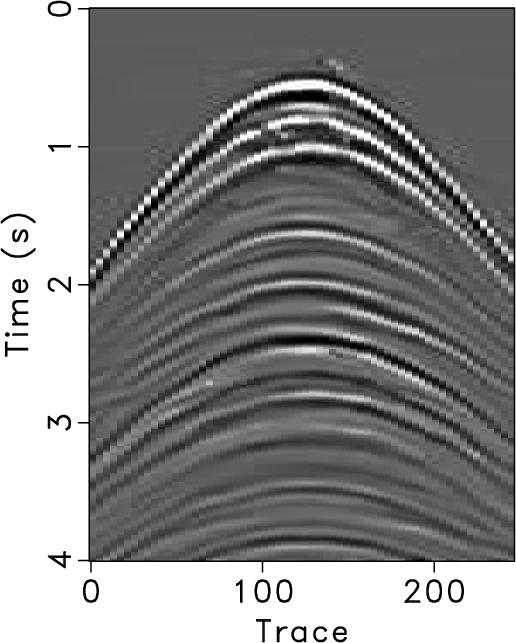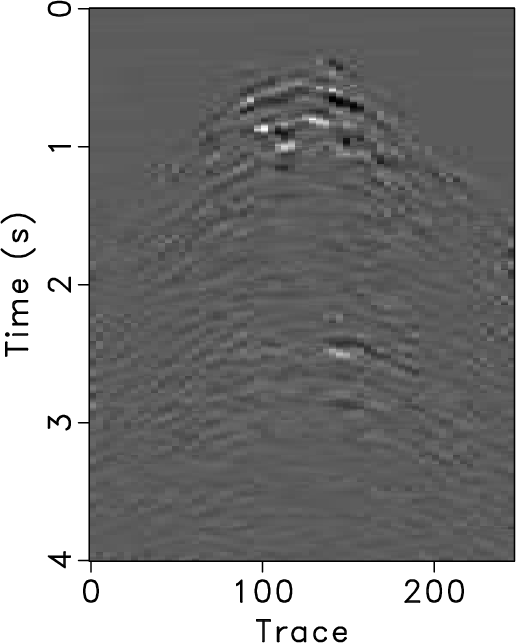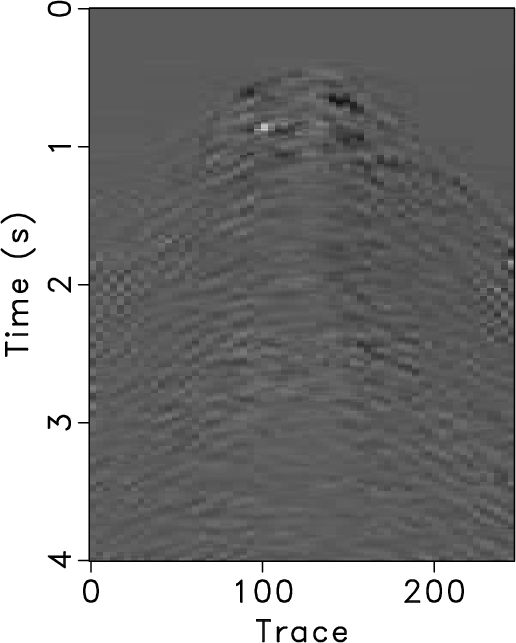|
|
|
|
Iterative deblending with multiple constraints based on shaping regularization |
Fig 6b shows the amplitude difference between 1.35s and 1.38s of the 25th trace in the simulated synthetic data example, as highlighted by the blue dash trace in Figs 2 and 3. The black solid line denotes the unblended trace (true trace). The blue double dot line corresponds to the proposed approach. The red dot dash line corresponds to seislet thresholding. The green dash line corresponds to ![]() thresholding. The yellow long dash line corresponds to
thresholding. The yellow long dash line corresponds to ![]() deconvolution. The blue double dot line is the closest one to the black solid line. The red dot dash line is the second closest one to the black solid line. I conclude that, even though seislet thresholding can obtain a good deblending result, the proposed approach can further improve the performance. This superior performance is the same in all the profile. Here I only show a small portion of the trace in order to make the comparison clearer.
deconvolution. The blue double dot line is the closest one to the black solid line. The red dot dash line is the second closest one to the black solid line. I conclude that, even though seislet thresholding can obtain a good deblending result, the proposed approach can further improve the performance. This superior performance is the same in all the profile. Here I only show a small portion of the trace in order to make the comparison clearer.






|
|---|
|
field,slet,ortho,fields,slet-e,ortho-e
Figure 7. Simulated field data example. (a) Unblended data. (b) Deblended data using iterative seislet thresholding. (c) Deblended data using the proposed approach. (d) Blended data. (e) Estimation error using iterative seislet thresholding. (f) Estimation error using the proposed approach. |
|
|
Fig 7 shows the deblending performance of the proposed approach on a simulated field data example. Figs 7a and 7d show the unblended and blended data, respectively. Figs 7b and 7c show the deblended data using seislet thresholding and the proposed approaches, respectively. Figs 7e and 7f show the estimation error sections using the two approaches. This example also shows that the proposed orthogonalization can improve the deblending performance of the traditional seislet thresholding.
I do not use local windows Yuan and Wang (2011) for all the aforementioned approaches and examples. Please note that when applied in local windows, all the approaches will work better. However, the seislet thresholding and the proposed approach does not need the local processing step and thus can be more convenient to implement. The limitation of the proposed approach is somewhat similar to the traditional iterative seislet thresholding approach, that is to say, the local slope need to be estimated correctly during the iterations and the data structure should not be too complicated. However, the orthogonalization can be combined with any existing iterative deblending approach and a combination of the orthogonalization strategy with other robust deblending approach can be a future investigation.
|
|
|
|
Iterative deblending with multiple constraints based on shaping regularization |